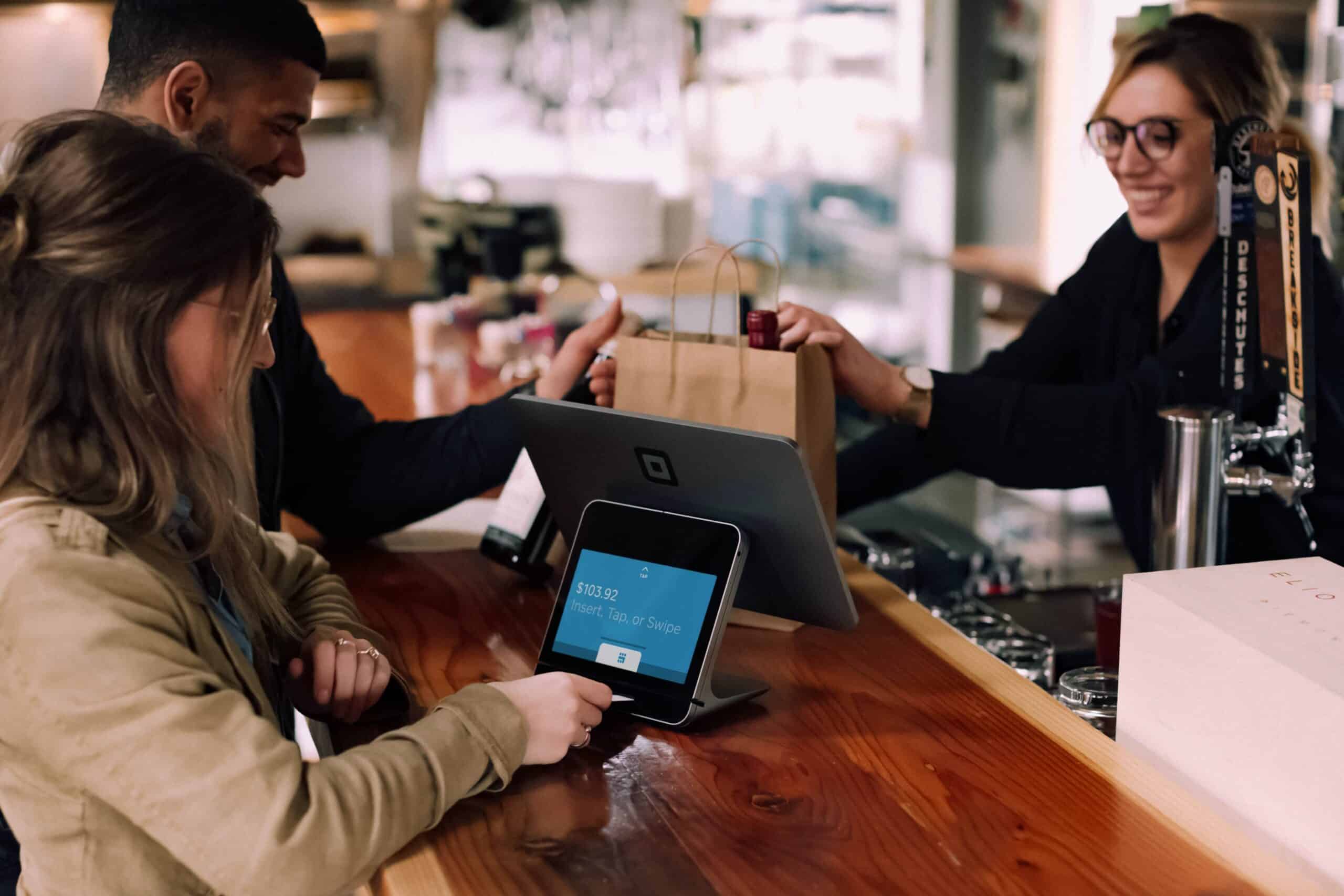Point of sales systems, or POS systems for short, are a must-have for any merchant that makes sales in person. They include all the technology needed to make sales and accept a variety of payment methods including cash and cards. But choosing the right POS system can be tough for new merchants when you’re not sure which features you’ll need or want for your business. Keep reading to learn more about what kind of features are available and what you should look for in your POS system.
What Merchants Should Look for in a Point of Sale System
Here are some of the key features and functions merchants should consider when picking the best POS system for their business.
Payment Processing Integration
A POS system helps you make sales and accept payments, but it doesn’t actually process card payments. For that, you’ll need a payment gateway to collect and encrypt the transaction information and a payment processor to actually facilitate the transfer of funds from the customer’s account to your merchant account. In order for all of that to happen seamlessly, it’s important to make sure the POS system you choose is compatible with the payment gateway and payment processor you work with. One of the easiest ways to make sure of this is to work with a payment processor that offers a bundled package that includes the payment gateway and processing services with the POS system. At National Processing, for example, merchants can choose from tailored plans for restaurants, retailers, and other businesses and add on the POS technology they need to succeed.
Other Software Integrations
While payment processing integration is the most important, it’s also helpful if your POS system can integrate with the rest of your tech stack. For example, being able to automatically update your accounting software with the latest sales and inventory data from your POS system would save a lot of time on the budgeting and bookkeeping work you do for your business. It’s also helpful to have a POS system that can integrate with your ecommerce platform if you sell online or any customer relationship management software you use.
A Simple and Intuitive Checkout Process
The checkout process is really the core feature of any POS system. It needs to be easy and fast to facilitate accurate purchase calculations and a more positive customer experience. That means you need to look for features that make it easy to ring up products, apply applicable discounts or coupons, and accept payment. On the customer-facing side, make sure it’s easy to complete the payment process using their preferred method. That might include things like capturing signatures, adding tips, or easily splitting the bill across a group.
Catalog Building and Management
Part of making the checkout process easy and keeping accurate records for inventory management is having a well-designed catalog of all the products and services you offer. So check out what data and level of granularity the POS system offers to make sure it fits your needs. A retailer selling clothes, for example, might need the ability to add multiple size or colors of the same item so that their inventory management system can accurately track not just which item, but which sizes and colors of that item are being sold. A restaurant owner, on the other hand, would need to keep track of expiration dates to better understand how much of their inventory is actually ending up in dishes that are sold to customers and how much is spoiling before it gets used.
Multichannel Inventory Management
Many merchants sell their products across multiple channels. A jewelry maker, for example, might have an online shop but also travel to different events to sell their products in person. A restaurant owner might have multiple locations or pop-ups along with an online store front where they sell specialty sauces or branded merchandise to customers. When you’re selling across multiple channels like that, you need a POS system that can easily integrate sales data from each channel into one central inventory management platform so that you always know exactly how much inventory you have as well as when and where to restock each item.
Data Analytics and Reporting
As the central point where you make sales, a POS system is a natural hub of extremely useful data about your business. It can tell you what you’re selling, when you’re making sales, how many repeat customers you have, and so much more. But in order to make use out of all the data it gathers about each sale, you need a POS system with robust analytics and reporting features. If you sell across multiple channels, for example, look for a system that lets you easily compare which products are your top sellers across each channel or what the average spend is across different channels or categories. If you sell a wide variety of products, you’ll want reporting that can show you your top sellers and your slowest sellers so you can adjust your inventory or your marketing strategy accordingly.
Frequently Asked Questions About Point of Sale Systems
Here are some of the most frequently asked questions merchants have when choosing between point of sale systems.
What Is a Point of Sale System?
Point of sale systems refer to the combination of hardware and software that merchants use to make sales and accept payments in person. It can calculate the total cost of a customer’s purchase, add the applicable sales tax, and then immediately adjust your inventory count based on what was sold.
What Is a Virtual Point of Sale System?
Virtual point-of-sale systems perform many of the same functions as a standard point of sale system except that it doesn’t require the physical card to be present. Instead of having the actual hardware or software, it’s an online platform for making sales and accepting payments.
What Is Needed for a Point of Sale System?
A complete point of sale system should include a card reader, a receipt printer, a cash drawer, and a screen displaying all the information about the sale and any discounts, gift card options, or other custom add-ons or options merchants offer. In terms of software, the system needs to at least be able to calculate the total cost, including tax and interface with your payment gateway. But many also include inventory tracking and other data analytics features that make running a business easier.
What Is the Difference Between CRM and POS?
A CRM (customer relationship management) system is what merchants use to store customer information, track customer interactions, and manage sales and marketing strategies. A POS (point of sale) system is the tool merchants use to actually make sales — something CRM technology can’t do. Some POS systems will include CRM features that help you build customer loyalty and identify sales opportunities.





